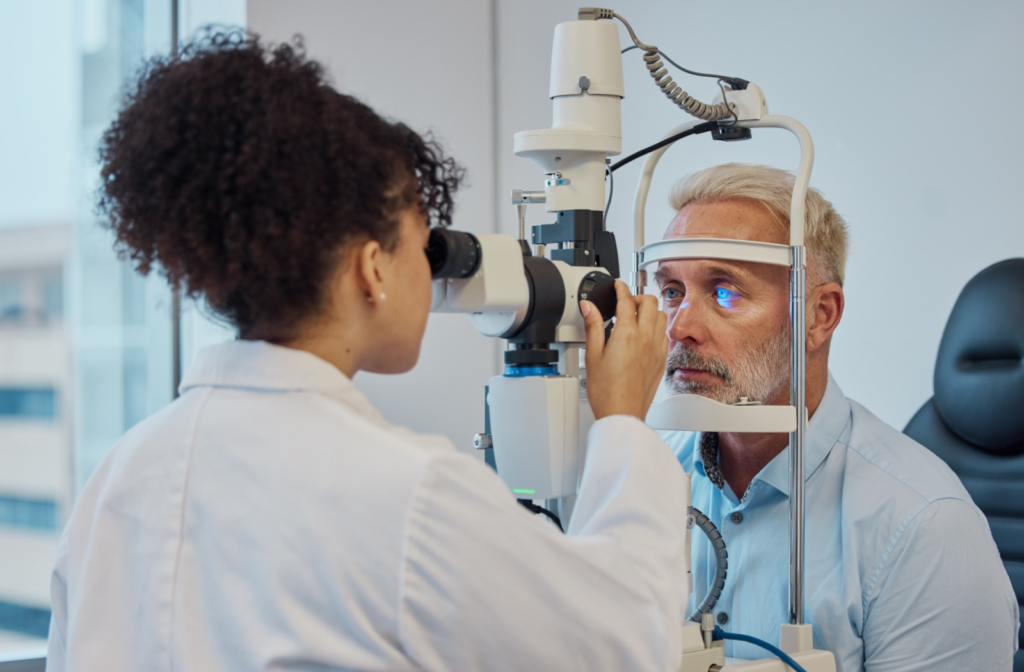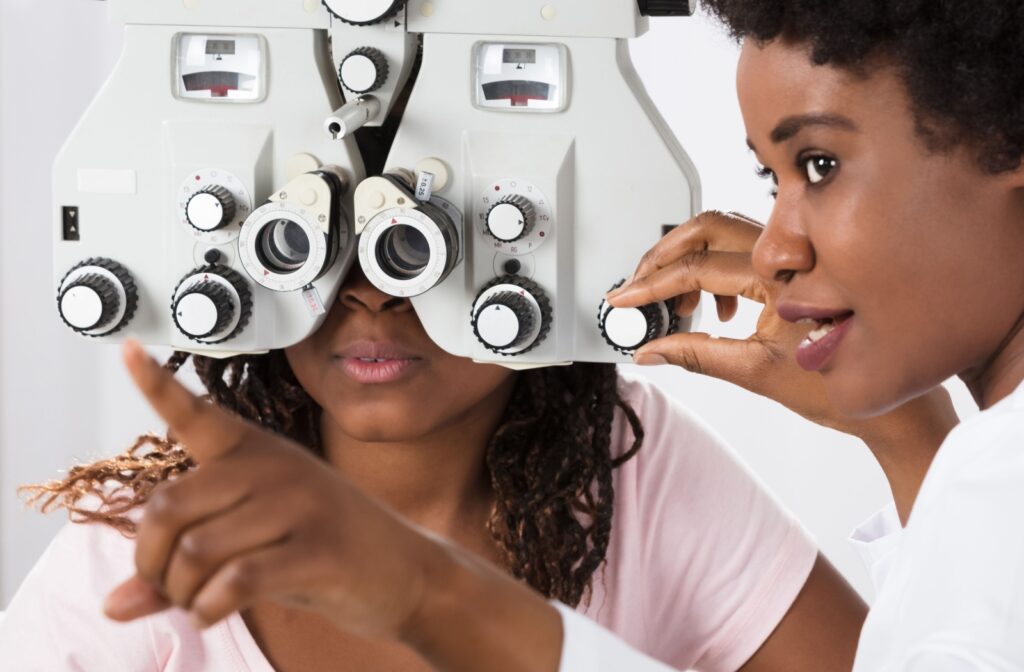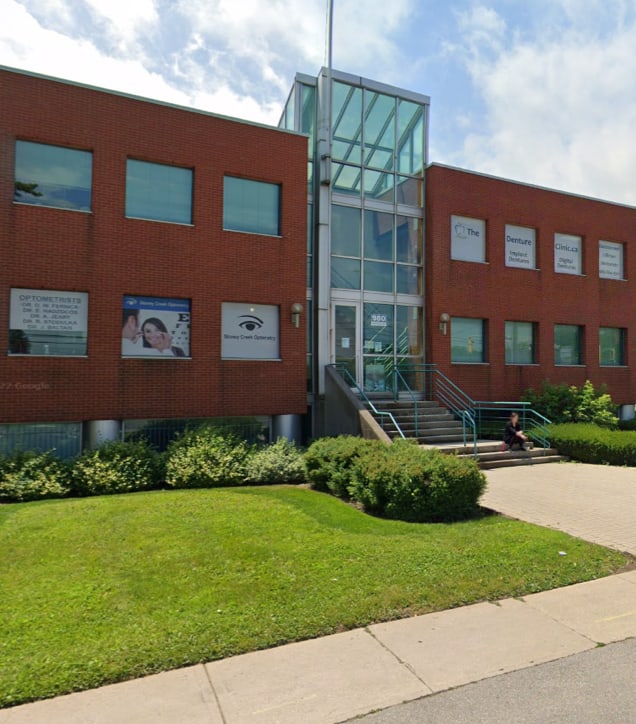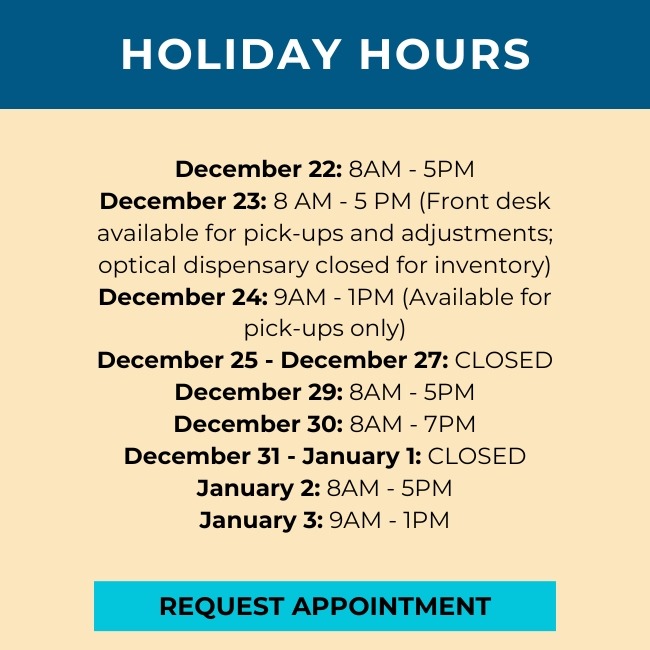If you’ve never had a comprehensive eye exam before, you might be wondering how long one takes and what’s involved. For many first-time patients, the unknowns can make scheduling an exam feel intimidating. However, an eye exam can be one of the most important steps you can take for both your vision and your overall health.
On average, a comprehensive eye exam lasts about 30 minutes. Depending on your age, medical history, or whether you need specialty testing, your exam may take longer. While half an hour may feel like just another item on your to-do list, it’s time well spent for the health of your eyes and your own peace of mind.
What to Expect During a Comprehensive Eye Exam
For first-time patients, it’s helpful to know what happens during the appointment. A comprehensive eye exam is thorough, but each step is straightforward and comfortable.
Here’s what’s typically included:
- Patient history – Your optometrist will start by asking about your vision, medical history, and any symptoms you’ve noticed. This helps guide the rest of the exam.
- Visual acuity testing – This is the familiar step of reading letters on a chart, which measures how clearly you can see at different distances.
- Refraction testing – Using a phoropter (the device with multiple lenses), your optometrist determines whether you need glasses or an updated prescription.
- Eye health evaluation – Your optometrist will examine your eyes and do diagnostic testing to check the health of your cornea, retina, optic nerve, and other structures.
- Internal health screening – Your optometrist can look for and detect changes that suggest broader health issues, such as diabetes or high cholesterol.
Altogether, these tests usually take about 30 minutes, though the timing may vary depending on your needs.
Recommended Frequencies of Eye Exams
How often you should book an exam depends in part on your age:
- Children and teens – Children should get their first eye exam between 6–9 months of age. Preschool children should have at least one exam between 2–5 years old, while school-age children should have yearly exams. Kids may need extra time for testing, since their eyes are still developing and issues like lazy eye or crossed eyes need careful attention.
- Adults – Most healthy adults between ages 20 and 64 need an exam every two years, unless they wear glasses, contact lenses, or have certain medical conditions. Exams usually last around half an hour.
- Seniors – For those 65 and older, appointments can take longer, as seniors are more likely to develop age-related eye diseases like cataracts, macular degeneration, and glaucoma.
If it’s your first exam, you may want to allow extra time for paperwork and discussion, especially if you have questions about your vision or eye health.
Other Types of Eye Exams
Contact Lens Exams
If you wear or are considering contact lenses, you’ll need a contact lens exam in addition to your standard comprehensive eye exam. Contact lens exams generally take 45 to 60 minutes, as your optometrist needs to:
- Take detailed measurements of your eyes to choose a proper fit.
- Provide training if you’re a first-time wearer, including how to insert, remove, and clean your lenses.
- Allow you to try trial lenses to see how they feel before committing to a prescription.
Diabetic Eye Exams
Diabetes has a close connection to eye health. Conditions such as diabetic retinopathy, cataracts, and glaucoma are more common in patients with diabetes.
These appointments typically take about 60 minutes, as they often include additional tests like dilation drops to widen the pupils. These drops take around 20 minutes to take effect, and they allow your optometrist to get a detailed look at the retina and optic nerve. Imaging tests may also be used for a more complete view of the structures of your eye.
Glaucoma Testing
Glaucoma is one of the leading causes of vision loss, yet it develops silently in the early stages. That’s why testing for glaucoma is built into most comprehensive eye exams.
These tests can include:
- Tonometry, which measures eye pressure.
- Visual field testing, which checks for changes in side vision.
- Optic nerve imaging, often using OCT scans, to detect subtle changes before symptoms appear.
These tests don’t add much time to your appointment, but they’re invaluable for long-term protection of your vision.

Why the Time Is Worth It
Spending 30 to 60 minutes at an eye exam may feel like an inconvenience, but the payoff is significant. Regular exams protect your sight, detect serious conditions early, and provide the peace of mind knowing your vision is being cared for.
Book Your Next Eye Exam
Protecting your vision starts with a routine exam. If it’s been a while since your last visit, or you’re scheduling one for the very first time, book an appointment with us at Stoney Creek Optometry today. Our friendly, knowledgeable team is ready to guide you through every step of the process and help you see the world more clearly.






















